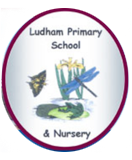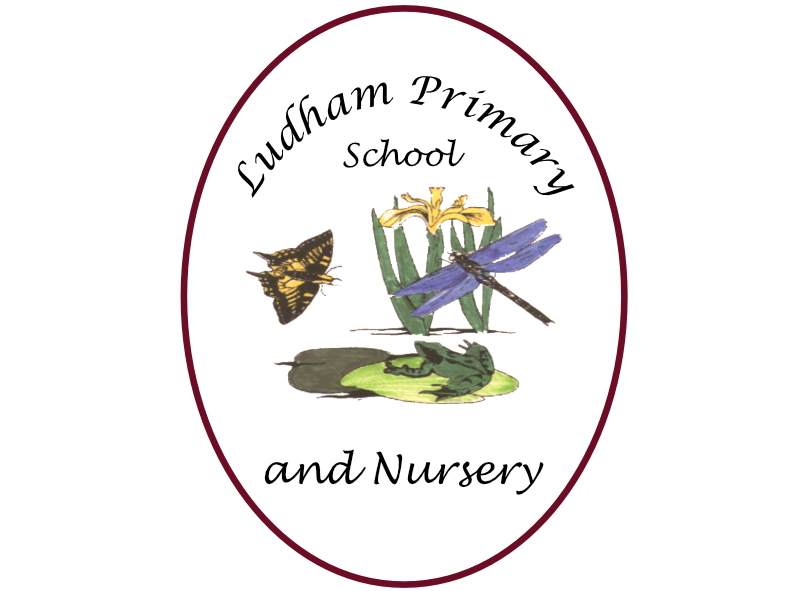Design and Technology
INTENT
Design and Technology at Ludham Primary School and Nursery instils qualities such as curiosity, enquiry and determination. Students are inspired, engaged and excited through carrying out a range of effective research and design and make tasks. Students thrive in learning how to work independently and collaboratively to gain an in-depth understanding of the creative and problem-solving process. The sense of achievement and the rewarding nature of the subject results in a tangible manifestation of pride in the completion of a product.
At Ludham Primary and Nursery, we are DESIGNERS and TECHNOLOGISTS! We want our children to love Design and Technology. We want them to have no limits to what their ambitions are and grow up wanting to be architects, graphic designers, chefs or carpenters. Design and Technology is dynamic and multidimensional. It is our intention that our D&T curriculum will provide opportunities to solve real and relevant problems, allowing our pupils to develop essential everyday skills and unlock their potential to be the designers and innovators of tomorrow. The D&T curriculum will encourage children to learn, think and intervene creatively to solve problems both as an individual and as part of a team. Design and Technology will allow all Ludham pupils to put their learning from other areas of the curriculum into practice and will work to enhance and deepen their understanding of those areas, including Maths, Computing, Science, and Art. Ludham pupils will learn about cooking, food and nutrition, ensuring that they acquire the fundamental life skills in order to be able to feed themselves healthily and independently, whilst learning about where food comes from, therefore making connections with their geographical and scientific knowledge. We want to equip them with not only the minimum statutory requirements of the Design and Technology National Curriculum but to prepare them for the opportunities, responsibilities and experiences of later life.
Design and Technology – IMPLEMENTATION
- At Ludham, DT is taught in every class, once per week during the second half of each term.
- Many DT units are based on planning from Kapow: Cooking and Nutrition, Mechanisms, Structures, Textiles and Electrical Systems
- Each child has a Design Technology book. Children may use this to research products, develop design ideas and initial sketches, and showcase learned skills, technical knowledge and vocabulary, final designs, and evaluations.
- We use a skills-based approach to teaching and Design Technology learning using objectives taken from the National Curriculum. We teach DT skills discretely, making relevant cross-curricular links, and ensure all children access all areas of the Design Technology Curriculum.
- Children will follow the 6 principles of DT:
- USER – to have a clear idea of who they are designing/making the product for.
- PURPOSE – to be able to communicate the purpose of the product they are designing/making
- FUNCTIONALITY – to design a product that works and functions effectively to fulfil the user’s needs
- DESIGN DECISIONS – to make own design opportunities, explore their own decisions and choices
- INNOVATION – opportunities to be original with their thinking, develop and explore their own ideas incorporating the essential skills involved in the process
- AUTHENTICITY – to make products that are believable, real, and meaningful to themselves and others, not just replicating ideas.
- Teaching of DT will also follow the cycle of Research, Develop own ideas, Make a final idea and Evaluate
- Beginning with the purpose of a product for a user, the children are encouraged to use the exploration of existing products to gain first-hand experience of existing approaches. We aim to promote creative problem solvers, both as individuals and part of a team and pupils develop their understanding of the ways in which people in the past and present have used design to meet their needs.
- Children design and make quality products using a range of tools, materials, and components, make connections with their learning across the curriculum including in maths, computing, science, and art and reflect on and evaluate techniques using subject-specific vocabulary.
- Teachers follow a clear progression of skills which ensure all pupils are challenged in -line with their year group expectations and given the opportunity to build on their prior knowledge.
- Effective CPD and standardisation opportunities are available to staff to ensure high levels of confidence and knowledge are maintained.
- To support teaching, staff access a range of resources
- Assessment data is used to inform future practice.
EYFS
Through Expressive Arts children are encouraged to construct and create purposefully selecting tools and techniques needed to shape, assemble and join materials they are using. children learn through first-hand experiences which involve putting their ideas into practice to develop an awareness and understanding of the possibilities and limitations of different materials. Practitioners encourage children to explore, observe, solve problems, think critically, make decisions and talk about why they have made their decisions as they design and create. Children’s natural creativity is fostered and opportunities for investigation, designing and making are offered daily within our provision, which enables children to learn a great deal about their world.
Design and Technology – IMPACT
The impact of our Design and Technology curriculum is in the development of our pupils being able to approach problems creatively and in a range of ways, applying their knowledge from across the curriculum areas independently. By providing a range of contexts and the necessary skills, we endeavour to support pupils in their future educational journey and in the understanding of the ever-developing world around them. The skills and attributes they develop will benefit them beyond school and into adulthood: the ability to use time efficiently, work with others productively, show initiative, independence, resilience and manage risks effectively will ensure well-rounded citizens who will make a difference in the wider world. Through the use of termly assessment, we ensure that children who are achieving well, as well as those who are in need of additional support, are identified, and additional provision and strategies are planned in and discussed with class teachers. We expect the children to know more, remember more and understand more about Design and Technology.
Year 1 to 6 - End Points
The key assessment criteria for design and technology have been devised in such a way that they can be applied to allow teachers to assess how well children are developing as design and technologists.
Teachers at Ludham Primary School and Nursery may wish to supplement these key assessment criteria with other criteria if they feel that this adds value.
In devising the key assessment criteria, consideration has been given to what is age appropriate in line with the key stage programmes of study.
These have been tested and evaluated by class teachers. In presenting these criteria, there is no suggestion that this is the only ‘correct’ sequence; but rather a suggestion to help teachers plan and assess.



